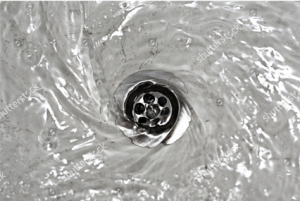Straight Seepage Channels
Straight seepage channels can be precast or framed in situ. They are set flush with the surface and contain a seepage conductor underneath the surface into which the surface water enters through spaces or gratings. At the point when utilized on shallow angles they are inclined to support hardships. Blocked Drains Bromley uses the advanced design for their drainage system because they like to be more advanced than all others. For that reason, they make much of the research.

Surface Water Channels
Surface water channels are ordinarily of adjusted or three-sided substantial area, by the same token
slip-shaped, cast, or precast and set at the edge of the street asphalt and flush with the street surface. Huge advantages can incorporate the simplicity of support and the way that long lengths can be built rapidly and moderately reasonably. Channel outlets can be situated at apparent spacings and conceivably incidental with existing streams. Notwithstanding, streets with level longitudinal angles might require the release of channels decently as often as possible into outfalls or equal longitudinal transporter pipes to limit the size of the channels.
Joined Surface and Ground Water Channel Channels (French Channels)
Open jointed, permeable, or punctured lines are laid in a channel that is refilled with permeable media. These channels are arranged in borderlines contiguous to the low edge of the street asphalt. Surface water runs off the carriageway and enters the top surface of the channel, going through the channel material and into the line at the foundation of the channel. Asphalt and covering layers should be bordering with the side of the channel so that any water inside these layers is additionally gathered by the channel. The subsurface water channels through the permeable media in the channel and out from the dark joints or punctured top surface of the line. The reviewing of the channel material is significant and should be determined accurately to forestall the silting-up of the channel. The channel might be encased by a geotextile sock as far as possible the silting-up of the channel.
Over-the-Edge Waste
This technique for waste is pertinent to dike conditions where the dike is developed of free depleting material. It isn’t fitting on dikes developed of silty or clayey, dampness defenceless soils.
Open Channels
Open channels are utilized to deplete surface water and to go about as interceptors for leakage water, including sub-soil water. The utilization of open channels might be limited for reasons of security and of support. They are regularly utilized, nonetheless, at the lower part of dikes and as catching channels at the highest points of cuttings. Open channels ought to be found a reasonable separation from the edge of the street asphalt to guarantee that water doesn’t leak once more into the street establishment.
A lot of provincial streets are depleted by “channels” which include shallow channels exhumed across borderlines to permit seepage from street edges to the side of the road open channels. Channels require customary support as they are inclined to the quick development of sediment, what’s more, blockage by garbage or vegetation development. A channel can be framed with a substantial base to diminish upkeep and further develop workableness.

